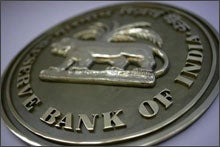 On Tuesday, the governor of the Reserve Bank of India (RBI), Duvvuri Subbarao, got a pat on the back from the government: The prime minister’s office gave him a two-year extension in his role. The 62-year-old Subbarao was supposed to retire in September, and it is not unknown for public sector bank chairmen and other functionaries who are appointed by the government to be left waiting until the last moment for an extension. Subbarao’s early reappointment means that his role as effective fire-fighter has been acknowledged. But it also means that there is a much larger fire to fight.
On Tuesday, the governor of the Reserve Bank of India (RBI), Duvvuri Subbarao, got a pat on the back from the government: The prime minister’s office gave him a two-year extension in his role. The 62-year-old Subbarao was supposed to retire in September, and it is not unknown for public sector bank chairmen and other functionaries who are appointed by the government to be left waiting until the last moment for an extension. Subbarao’s early reappointment means that his role as effective fire-fighter has been acknowledged. But it also means that there is a much larger fire to fight.
Although many analysts agree that the global economic upheaval following the downgrading of the U.S. from AAA status by Standard and Poor’s will not affect India too much, no one is quite sure. The violence in the U.K. may be coincidental, but some observers are seeing it as a sign of a larger malaise. If things spin out of control and the economic crisis is accompanied by social unrest, there is no saying what could happen. “The challenges are there, but we have the capability of facing them,” Finance Minister Pranab Mukherjee told journalists on the steps of Parliament House. “Collectively, with the efforts of all concerned, particularly with the cooperation of the RBI, we will be able to face the challenges.”
Mukherjee had to spring to the defense of the RBI governor a few days earlier. On July 26, the RBI had raised interest rates by 50 basis points (bps; 100 bps equals 1%). Industry observers said it was way too much. “Consensus opinion was that it would go up only 25 bps,” says Nandan Chakraborty, managing director (institutional equity research) of ENAM Securities. “It is clear that RBI’s focus remains firmly on containing inflation.” According to Pranab Mukherjee, the various measures will help bring inflation down to 6%-7% now from close to double digits during the first half of 2011.
India has actually been fighting its own battles, very different from those in the U.S. and Euroland. The villain is inflation. Today, everything else is being sacrificed to control that. While raising the interest rate, the RBI reduced its GDP growth estimate from 8.5% to 8%.
Expectedly, the rate hike has been opposed by industry and exporters. In a letter to the RBI before the rate hike was announced, the Indian Merchants Chamber said: “[An] increase in the interest rate would have significant negative impact on business competitiveness. This would be more crucial in the wake of the slowdown of India’s economic growth and decline in industrial production.” Interest rates have been raised 14 times since February 2010. The repo rate (the rate at which the RBI lends to banks) is now 8%. “The RBI had very little option but to go for another hike,” says Hemant Kanoria, CMD of Srei Infrastructure Finance. “But the 50 bps hike is much above comfort levels. The higher interest rates will only curb investor appetite. The manufacturing sector is unlikely to witness any fresh investment in the near term.”
The global financial crisis should actually help industry on the interest rate front. The RBI is likely to ease the rate hikes as growth slows down and inflation starts looking more reasonable. The stock markets have gone down, but they have been looking more solid after an initial knee-jerk plunge. On Wednesday morning, they were up 2%.
Commodity and crude prices are likely to fall because of the global crisis; that trend is already visible. This will also have a beneficial effect on inflation in the country. On the obverse side, exporters will feel the pinch. IT companies are putting up a brave front, but they won’t escape unscathed.
India’s exposure to U.S. debt is estimated at US$41 billion; it is the 14th largest holder of U.S. treasuries. China is the highest with US$1.15 trillion. In the past year, Indian holdings have grown by about US$10 billion. But this debt is, of course, a global problem.
“India is in a better position than other nations to meet the challenge posed by the developments,” says Mukherjee. “We will focus on encouraging greater domestic consumption and give impetus to the drivers of domestic growth.”
But the biggest benefit is that the crisis might give the government the opportunity to put in process a new set of economic reforms. For India, this might actually be another turning point.



